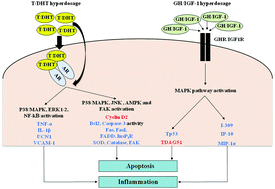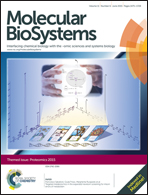Molecular effects of supraphysiological doses of doping agents on health†
Abstract
Performance-enhancing drugs (PEDs) gained wide popularity not only among sportsmen but also among specific subsets of population, such as adolescents. Apart from their claimed effects on athletic performance, they are very appealing due to the body shaping effect exerted on fat mass and fat-free mass. Besides the “underestimated” massive misuse of PEDs, the short- as well as long-term consequences of such habits remain largely unrecognized. They have been strictly associated with serious adverse effects, but molecular mechanisms are yet to be elucidated. Here, we analyze the current understanding of the molecular effects of supraphysiological doses of doping agents in healthy biological systems, at genomic and proteomic levels, in order to define the molecular sensors of organ/tissue impairment, determined by their misuse. The focus is put on the anabolic androgenic steroids (AASs), specifically testosterone (T) and its most potent derivative dihydrotestosterone (DHT), and on the peptide hormones, specifically the growth hormone (GH) and the insulin-like growth factor-1 (IGF-1). A map of molecular targets is defined and the risk incidence for human health is taken into account.

- This article is part of the themed collection: Proteomics

 Please wait while we load your content...
Please wait while we load your content...